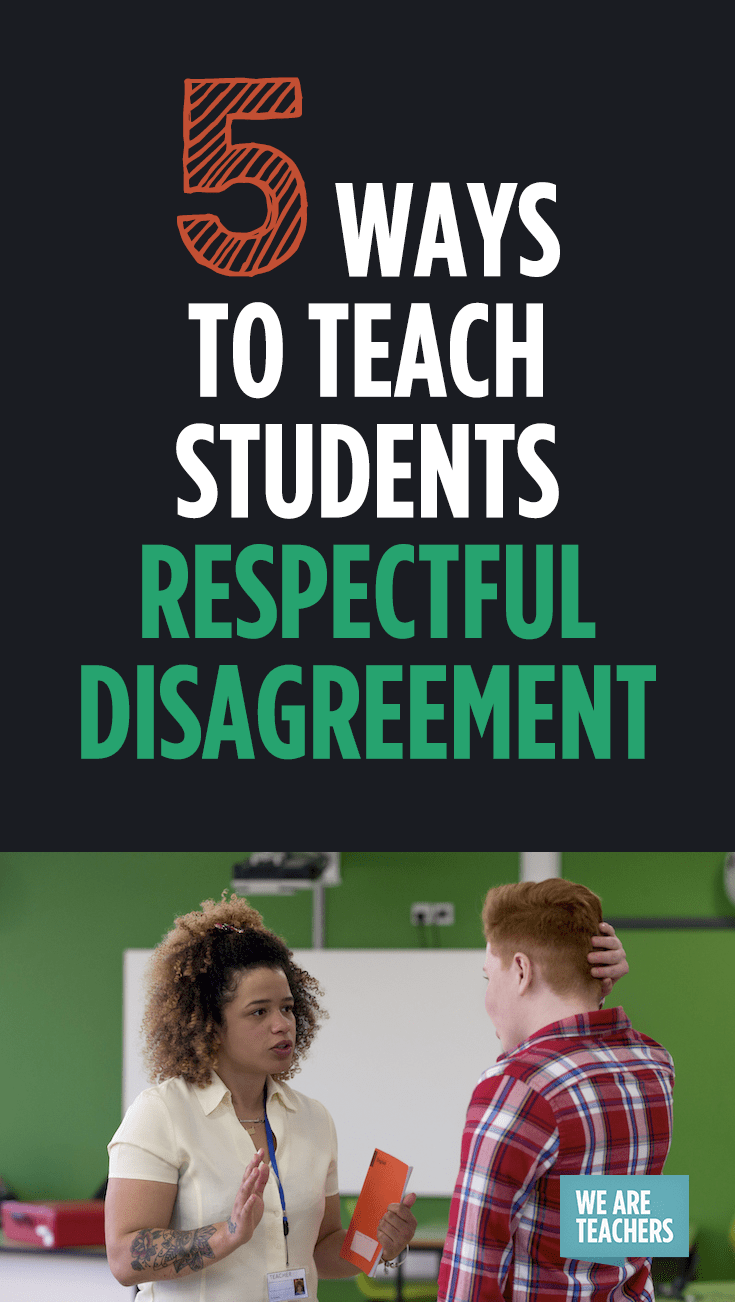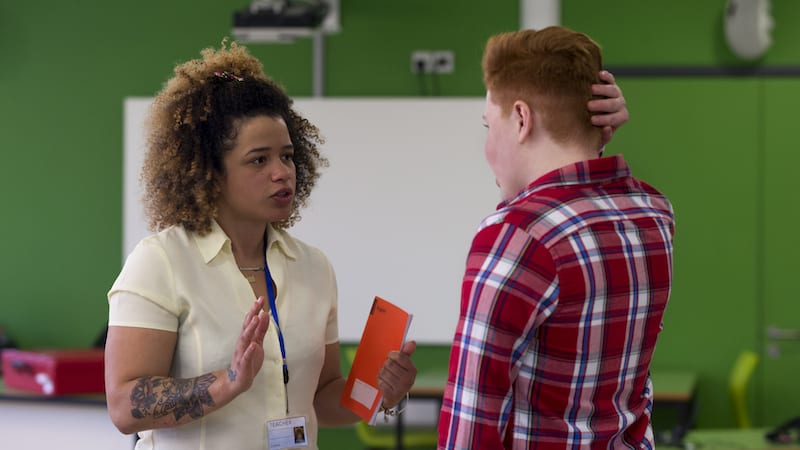One of the most important things I teach my students is respectful disagreement — how we should engage—not dismiss—the people who disagree with us.
This is a lesson that is easy to get up and teach, but is much more difficult to live out. Disagreeing respectfully with others, especially on issues we’re passionate about, isn’t easy. Disagreeing respectfully requires time. It requires patience. It requires creativity. It requires looking inward, not just outward.
Here are some tips on teaching students how to disagree respectfully. It’s one of my favorite concepts to teach. It’s highly engaging for students and helps contribute to a warm and stimulating classroom environment.
1. Teach logical fallacies and how to avoid them.
We don’t have to look far for examples of logical fallacies in this political climate—examples of ad hominem and red herrings are everywhere. A great place for students to start is looking for logical fallacies in advertising with this lesson plan from readwritethink.org. It’s for 9-12th graders, but can easily be adapted for middle school.
2. Teach students about reliable sources, including how to cite them and evaluate the sources used by others.
Most teachers know about the Stanford University study revealing the disturbing truth that 80% of secondary students couldn’t distinguish between real news and sponsored content, so make media literacy a part of your curriculum if it isn’t already. There are a ton of resources out there on the topic of reliable sources, but I particularly like the questions listed with number 4 in this article on evaluating the quality of online info.
3. Set an example for students in the way you handle disagreement and conflict.
How do you respond—verbally and non-verbally—when a student corrects you? When, during class, you realize that the person who volunteered to make copies for you forgot to make them double-sided? Your students are watching you all the time, and your responses—whether you smile and respond creatively or roll your eyes and say something dismissive—speak volumes about the way to handle conflict with others.
Equally important is acknowledging when you miss the mark. I am far from having perfected the art of respectful disagreement, so when I mess up in front of students, I make sure to apologize and point out where I went wrong.
4. Give students the words.
The actual language of respectful disagreement is incredibly important. Create a list of sentence stems for students to use while practicing disagreement. Here are some examples:
- “I want to understand your point of view better. Can you explain to me why you feel this way?”
- “I see your point. However…”
- “I disagree, but would like to know more about your point of view.”
- “I can tell this is an issue you’re passionate about. Can you tell me about how you arrived at this viewpoint?”
- “Since I’ve listened to your point of view, can I tell you more about what I believe?”
I start by having my students “debate” on which pizza toppings are best. It’s so fun to hear them say things like, “While I don’t personally support olives being on pizzas, I’d like to hear more about why you like them. Do you prefer green or black?”
5. Teach students empathy so they learn to seek out the compelling underlying reasons WHY another person may think differently.
And there are always compelling reasons. Many times, the deepest, sometimes hidden reason behind someone’s viewpoint is fear—of safety, of freedom, of being able to provide, of inadequacy. And aren’t those things we all fear? When we teach students that there is ALWAYS common ground between them and those with whom they disagree, we may be teaching them the most important lesson of their lives.


